Edmund Rice (1762-1844); apostle of modernisation
Published in 18th-19th Century Social Perspectives, 18th–19th - Century History, Features, Issue 3 (Autumn 1996), Volume 4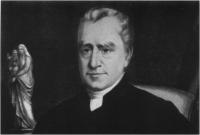 The forthcoming beatification of Edmund Rice will inevitably focus attention on his life and deeds. Yet, the absence of a diary, memoirs or a contemporary biographer restrict our image of the man’s personality to mere glimpses. Above all, his modesty and reticence make him an elusive subject for a biographer. His contemporaries, for instance, appear to have been unaware of the most basic details about his short marriage. Rice’s modesty was extreme: on one occasion the Brothers requested him to sit for a portrait, ‘for what’, he replied, ‘so as you can look at it while I’m in Purgatory’. Fortunately, the General Chapter of 1841 directed Brothers who had known him to record their recollections and it is from this archive that our best insights are drawn.
The forthcoming beatification of Edmund Rice will inevitably focus attention on his life and deeds. Yet, the absence of a diary, memoirs or a contemporary biographer restrict our image of the man’s personality to mere glimpses. Above all, his modesty and reticence make him an elusive subject for a biographer. His contemporaries, for instance, appear to have been unaware of the most basic details about his short marriage. Rice’s modesty was extreme: on one occasion the Brothers requested him to sit for a portrait, ‘for what’, he replied, ‘so as you can look at it while I’m in Purgatory’. Fortunately, the General Chapter of 1841 directed Brothers who had known him to record their recollections and it is from this archive that our best insights are drawn.
Practical and business-like
His correspondence, too, tends to be practical and business-like and this provides but a few glimpses on the life of his soul. There is, however, one inspiring letter written to the Dublin architect Bryan Bolger in which he reveals something of his inspiration:
Let us do ever so little for God, we will be sure He will never forget it, nor let it pass unrewarded. How many of our actions are lost for want of applying them to this end. Were we to know the merit of only going from one street to another to serve a neighbour for the love of God, we should prize it more than gold or silver…One thing you may be sure of, that whilst you work for God, whether you succeed or not, he will amply reward you.
There is also a sense visible in his correspondence and actions that he constantly strove against the natural inclination of his family and class. Rice’s isolation of texts against usury in his bible may suggest qualms of conscience, while his generosity to the poor was in stark contrast to the acquisitive nature attributed to his family. Occasionally the preoccupations of his class became visible in his frequent recourse to the law to secure tenure or bequests, but in these instances it was the poor, rather than himself, who stood to benefit from litigation. Yet, in spite of these limitations and the lack of sources, an examination of Rice’s activities and achievements provide a fascinating insight into the Catholic revival and the modernisation of Irish society.
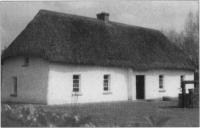
The farmhouse outside Callan, County Kilkenny, where Edmund Rice was born.
Catholic endurance and emergence
The late eighteenth and early nineteenth-centuries saw the emergence of the Catholic Church in Ireland from the restrictions of the penal laws. Modern writing has clearly illustrated that the story of the Church during the penal era was one of endurance and emergence rather than the traditionally accepted image of unrelenting persecution. This revival, however, was uneven in many respects. The obvious differences were geographical, where the recovery was most pronounced in mid-Munster/south-Leinster with renewal percolating only slowly into Ulster/north-Connacht. In social terms too, contrary to the received image, Catholicism as an institutional force was more firmly entrenched in the richer areas, the upper social classes and the towns.
These factors are clearly illustrated in the case of Nano Nagle, Catherine McAuley, Edmund Rice and the religious founders of the period. It was from their class, the strong farmer/merchant ranks, that the great impetus for renewal came. They were the driving force behind the spate of chapel building which characterised the period, while they also tackled the problem of Catholic education. This was a closely knit group, sharing many common connections: the founder of Clongowes Wood College, Peter Kenney SJ, for instance, was spiritual director to both Edmund Rice and Teresa Ball, the foundress of the Irish Loreto Sisters. Edmund Rice was inspired by Nano Nagle and she in turn was related to Edmund Burke, the great champion of Catholic emancipation, and Fr Theobald Mathew, the Apostle of Temperance.
Land-grabbers
The complexity of the penal era is reflected in the case of the Rice family of Callan, County Kilkenny. Edmund’s father farmed 182 acres and their home was similar to many owned by their class. It was a long, low cottage with a deep thatch; it had four bedrooms, a parlour, a kitchen and a small hall. They had a frugal lifestyle which was in part the key to the strength of these rising families. With small outgoings, they were able to endure hard times, and during the agricultural boom in the last quarter of the century they were in a position to accumulate capital. As the penal laws were dismantled from 1778 onwards, Catholics availed of leases, often outbidding their more ostentatious Protestant neighbours. The Rices were notoriously ambitious and evidence suggests they were regarded as land-grabbers. By all accounts, they were ‘fond of land and always anxious to secure a good place’; other recollections claim that they were ‘anxious to get rich quick’ and ‘endowed by a too keen sense of business’.
Like many of their class, the Rices had a second string to their bow and the Waterford branch of the family maintained a thriving provisioning business near the Quay. Edmund’s uncle Michael specialised in livestock, slaughtering, packing and exporting meat to Bristol and Newfoundland. In addition, he had lucrative contracts with the army, the Admiralty and shipping companies. In 1779, Edmund joined his uncle in Waterford and within twenty years through trade and investments, including money-lending, he had amassed a fortune and land holdings in excess of two thousand acres.
Active in Catholic politics
Edmund, the successful and respected merchant, was at the centre of a bustling social scene in Waterford, a circle which included the prosperous Aylward, Shiel and St Leger families. He played an active role in Catholic politics; he was a member of the Catholic Committee and his name appears on the Waterford address in support of the Catholic Declaration in 1792. Yet, in the early years of the 1790s there is a perceptible shift in the young merchant’s priorities. In 1789, Edmund’s wife of two years, Mary Elliott, died leaving him to care for their handicapped daughter. This tragedy left him desolated and from that point his religious faith and the practical expression of it became the dominant feature of his life. In 1790 he joined a confraternity in the city dedicated to the practice of charity and the frequent reception of the sacraments. His name appears on the subscription lists for several religious imprints and in 1793, he was among the founders of the Trinitarian Orphan Society. In the following year, he assisted in the establishment of the Waterford Society for Visiting and Relieving Distressed Room Keepers, but foremost amongst his concerns was the plight of prisoners.
In time, Edmund considered a vocation to the priesthood and the Augustinian Order, of which his brother John became assistant general, seemed an obvious choice. Nevertheless, he was dissuaded from this course by his brother and friends in Waterford who convinced him that his calling was to the poor of the city rather than the seclusion of the monastic cloister. In 1800, inspired by the example of Nano Nagle, Edmund Rice set out to do for the poor boys of Waterford what the Presentation Sisters had done for the Catholic girls of Cork. His first school began in an old stable in New Street; conditions were primitive, furniture was sparse and benches were borrowed each day from a nearby pub. Rice lived above the school and within months he was joined by two Callan men, Thomas Grosvenor and Patrick Finn and together they formed a religious community.
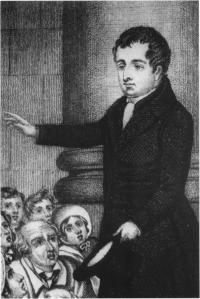
Fr Theobald Mathew – the part played by Edmund Rice in his campaign for temperance and modernisation has been neglected.
Catholic education to the poor
This trio was the genesis of what would become two great religious congregations, the Presentation and Christian Brothers. The hedge schools may not have been as we once believed; they were in effect private fee-paying schools operated on a commercial basis which made them inaccessible to the vast majority of the population. In general, the only alternative was the free education offered by the endowed schools, but the Catholic community was suspicious of their alleged proselytising activities. It was for this reason that Edmund Rice and his confréres set about offering a Catholic education to the poor about whom none cared. The brothers’ charity extended beyond the provision of education. The poorer pupils received a daily meal of bread and milk, while a tailor was employed at Mount Sion to provide suits and repair the boys tattered clothes.
Rice received invitations from bishops throughout Ireland to establish schools in their dioceses. Whenever possible he responded favourably, but there were limitations on his freedom of response. The shortage of manpower remained a problem and it was not long before his fortune was exhausted. The costs of establishing even the most rudimentary school room was considerable, a reality which made it impossible for the Brothers to open schools in areas without benefactors willing to bear the costs. Nevertheless, by the time of his resignation as Superior General in 1838 the Brothers had seventeen schools with seven and a half thousand pupils on their rolls. These included six schools in England catering for the Irish diaspora, the real poor of Ireland.
Edmund’s role in the Catholic revival went beyond the establishment of his religious orders. At a broader institutional level, Edmund applied his financial acumen to the various projects in the emerging Church. For years he acted as financial advisor to the Presentation Sisters, investing their dowries, managing their accounts and assisting in the acquisition of property. There is a tradition too, that Edmund managed the finances of the suppressed Jesuit Order until their restoration in 1814. Certainly his letter to Peter Kenney, the new provincial, on the opening of Clongowes Wood College in 1814 indicates that he was very familiar with all aspects of the ownership of that property. Edmund also acted for the bishops of Ireland, purchasing government bonds and stock on their behalf.
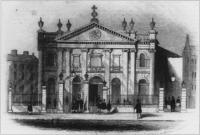
The Catholic cathedral, Waterford.
Institutional basis of the Church widened
Amongst the urban poor, the Christian Brothers and the teaching Sisters played a vital part in widening the base of the institutional Church. Through their teaching and catechetical instruction the Brothers introduced the poor to the new forms of Catholic devotion which became the hallmark of nineteenth-century Catholicism. The effect of this teaching was to bring a previously alienated class within the ranks of the Church, which in time provided the backbone of the emerging Catholic Ireland.
On another level too, the Brothers created an urban working class. In this sense, Rice has been described as Ireland’s John Wesley. Just as the Methodists in England and Wales transformed society, so the Brothers in Ireland instilled in their pupils the virtues of discipline, hard-work and sobriety. From the very beginning Edmund Rice cultivated these values. The young Italian immigrant, Charles Bianconi, founder of a transport system and one of the first recipients of Edmund’s charity, was encouraged to be ‘sedulous and industrious’, careful and sober.
These values were at the core of the Brothers’ programme and were celebrated by contemporary commentators. The Waterford Chronicle, in June 1816, hailed the work of their school at Mount Sion:
They have withdrawn multitudes from the dangers of idleness and vice, and have reared them in the pursuit of useful knowledge and in the habits of virtuous and honourable industry.
Dean Ryland of Christ Church expressed similar praise for the work of the Christian Brothers:
They have already impressed upon the lower classes a character which hitherto was unknown to them: and in the number of intelligent and respectable tradesmen, clerks and servants which they have sent forth, bear the most unquestionable testimony to the public services of Edmund Rice.
The Brothers played a vital role in the formation of this disciplined work force. Their curriculum was constructed so as to meet the employment demands of nineteenth-century industrial society. Great emphasis was placed on literacy in English: Edmund Rice consciously placed clocks in class rooms ‘to better direct them in regulating the time’, and the syllabus included modern subjects, ‘calculation, good writing and a thorough knowledge of book-keeping’. Referring to the opening of Mount Sion, Rice’s biographer has written:
The good work initiated on that first day of May 1804 coincided with the dawn of the moral, intellectual and religious regeneration of the youth of Ireland.
Father Theobald Mathew
All of these factors point to Edmund Rice’s inclusion in the great modernisation process which swept the nineteenth-century world. Fifteen years ago H.F. Kearney published a seminal article in which he argued that Fr Mathew should rightly be celebrated as ‘the Apostle of Modernisation’. He believed the temperance crusade was only intelligible within a transatlantic context, beginning in New England in the 1820s and gradually spreading to Britain and Ireland. Far from being simply a tee-total campaign, this was part of a wider process of modernisation and was linked with other campaigns, including the abolition of slavery. Thackeray described Fr Mathew as:
Avoiding all political questions, no man seems more eager than he for the political improvement of this country. Leases and rents, farming implements, reading societies, he was full of these and his schemes of temperance above all.
The campaign was modernising, too, Kearney argues, in the sense that it represented a shift from ‘local’ to ‘cosmopolitan’ values and an attempt by urban men to control and reform rural society. It is surprising, however, that Kearney and both of Fr Mathew’s recent biographers have neglected the crucial part played by Edmund Rice in this campaign for temperance and modernisation.
Sobriety had been a constant theme in Rice’s teaching. Of the few anecdotes which survive about him one of the most substantial concerns a Waterford alcoholic and ‘lady of the lane’, Poll McCarthy, who begged Edmund for help. Instead of listening to her tales of woe, he lectured her on her drinking. She promised that if he would help her, she would go to Cork and take the pledge from Fr Mathew. There and then he brought her to a drapers and fitted her for the journey. She walked to Cork and back and ‘her life subsequently was as edifying as previously it had been notorious’.
Within the schools, too, he encouraged temperance. Many of the Memoirs of Edmund Rice recall his kindness to the children of alcoholics; how he took special care of them, while at the same time seeking out their parents and urging them ‘to lead a better more sober life’. Another remembered how he had established a Purgatorial Society at Mount Sion, where he lectured the people on matters which promoted temperance. This, in fact, may be a reference to the juvenile temperance society founded at Mount Sion by Br P.J. Murphy who in time became one of Fr Mathew’s most devoted lieutenants.
Edmund Rice and Fr Mathew were friends for over forty years; the friendship may have begun while the young Mathew was a pupil at St Canice’s Academy in Kilkenny, before he went to Maynooth in 1800. Both men shared a common vision and desire to improve the lot of the poor. Education was also a concern of the young Capuchin; shortly after arriving in Cork in 1814 he established a school in an effort to do for the south side what the Brothers had done for the north. By 1824 there were 500 pupils in this school and before the Brothers’ school at Sullivan’s Quay was completed in 1828, classes were held in an old store at Cove Street, where Fr Mathew lived.
The Brothers played a crucial part in Fr Mathew’s temperance crusade and both movements were closely identified. The first juvenile total abstinence society founded in Ireland was at the North Monastery and Fr Mathew consciously cultivated contacts with the Brothers. In June 1843, in North Richmond Street, he praised the work of the Brothers and expressed his delight
that the Christian Brothers had come forward as living examples of the great lessons of total abstinence which they inculcated. He thanked God that he had their active co-operation and that of their numerous pupils whose example alone in taking the pledge was a vast gain for the cause of temperance.
Later in the same year he described the day Edmund Rice took the pledge as the happiest day of his life:
I was aware that when he and the other members of that illustrious body came forward from their mountain, a second Carmel, to diffuse the blessings of temperance as they had those of education, not only through Ireland, but also in England, the principles of the Society were placed on a sure basis, even on a rock which the breaking of the tempest could not shake.
The identification of the cause of education and temperance found expression in Fr Mathew’s numerous visits to the Brothers’ schools; in 1843 alone, he made at least nine visits to their schools. In late January 1844 Fr Mathew visited Edmund Rice for the last time at Mount Sion. Ten months later he sat next to Bishop Foran at the great month’s mind Mass in the cathedral of Waterford. According to Fr Mathew’s biographer, this commemorative service was originally planned for 2 October, but was held a day earlier in order that the ‘Apostle of Temperance’, who was due to preach at the consecration of Dún Laoire Church, could attend.
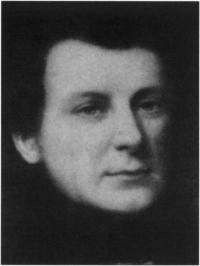
Daniel O’Connell – many intriguing links between the Liberator and Rice.
Daniel O’Connell
Again, in the year following Edmund’s death, when Daniel O’Connell visited the North Monastery the hall was decorated with two large satin banners; one read in hoc signo vinces , while ‘Temperance and happiness’ was emblazoned on the other. There were, of course, many intriguing links between the Liberator and Rice who shared a common vision of a Catholic and Celtic Ireland. At a crucial point in the planning of the Brothers’ model school in North Richmond Street, Dublin, the Catholic Association pledged its support for the project. In due course, O’Connell was invited to lay the foundation stone and that event was transformed into an awesome political rally. Over one hundred thousand joined in that great occasion in 1828; two weeks later O’Connell announced his intention to capture the parliamentary seat for Clare.
Edmund Rice’s life then, spanned this crucial era, from the dawn of Emancipation to the eve of the Great Famine. These were critical years in the formation of Irish Catholic consciousness, marking the emergence from the penal era and the establishment of the modern church. In all of this Rice made a significant contribution, fostering confidence and creating a literate modern working class. Yet, while Rice’s spirituality was characterised by an unyielding faith in Divine Providence he was a man of immense practicality who channelled his energies towards the provision of education for the poor. In so doing, Edmund played a vital role in the modernisation of Irish society, a contribution which is often forgotten in the tendency to portray his successors as reactionaries, hell-bent on the defence of ‘faith and fatherland’.
Dáire Keogh lectures in Irish history at St Patrick’s College, Drumcodra.
Further reading:
D. Keogh, Edmund Rice, 1762-1844 (Dublin 1996).
D. Blake, Edmund Rice (Dublin 1996).
H.F. Kearney, ‘Father Mathew; Apostle of Modernisation’ in A. Cosgrove and D. McCartney (eds.), Studies in Irish History presented to R. Dudley Edwards (Dublin 1979).
M.C. Normoyle, A Tree is Planted; the life and times of Edmund Rice (Dublin 1976).
















